New Under-ice Observing Capabilities Could Lead to New Discoveries in the Great Lakes
During the dog days of summer here in the Great Lakes, scientists at NOAA’s Great Lakes Environmental Research Laboratory (GLERL) are already thinking about the ice that will form on the lakes this winter.This year, NOAA GLERL and a team of federal, university, and industry partners are conducting test deployments of an autonomous underwater vehicle (AUV) in Lake Michigan, with the ultimate goal of using it under lake ice during winter to collect ecological and water quality data. Observations of winter ecology are difficult to obtain compared to observations in the ice-free season, when most
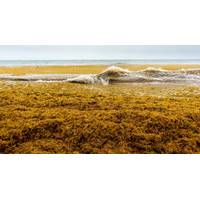
Scientists Come Closer to Solving Caribbean Seaweed Mystery
;s growth will take years of funding and research. But scientists say that doesn’t mean governments can’t act now to reverse the trend.“This phenomenon will continue until there is a change in public policy,” said Carlos Noriega, an oceanographer at Brazil’s Federal University of Pernambuco. Brazil, for example, could slow deforestation, which has led to a boom in cattle ranching that allows loose soil, manure and fertilizer to wash into rivers.He also noted the burgeoning human population in Brazil’s Amazon region. The five largest cities there have grown
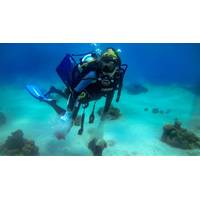
Professor Raquel S. Peixoto: The Coral Warrior
Vault) to learn more, collect, store, and analyze microbes from the Red Sea. Professor Peixoto believes that the Red Sea could hold answers for the aid and recovery of corals around the world. She received her Ph.D. in microbiology, M.S. in biotechnology and B.S. in biological sciences from the Federal University of Rio de Janeiro, Brazil.Watch Professor Raquel Peixoto on Marine Technology TV
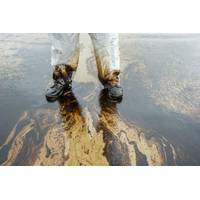
Brazilian Beaches Hit by Second Oil Spill
expressed concern about the spill."There was a lot of oil in the beaches in the morning. It seems to be more than we saw the first time that this happened, in early November," said Helena Soares, who works with community tourism in the area.Rivelino Cavalcante, an ocean researcher at the Federal University of Ceará, told news website G1 that a large quantity of the same oil that appeared on beaches earlier this year still lay in the seabed and was moving to shore because of ocean currents.Brazilian government officials have said that tests indicated Venezuela as the probable origin of
UFRJ Nautilus: A Brazilian AUV Project
The UFRJ Nautilus AUV is an academic project designed to develop autonomous underwater vehicle (AUV) technology in Brazil and participate in the annual Robosub competition. According to project founder, Lucas Armand, a Naval and Ocean Engineering graduate from the Federal University of Rio de Janeiro (UFRJ), the emergence of Nautilus has a lot to do with personal history: “I was having a difficult time in college, because I no longer identified myself with the course. The UFRJ Naval Engineering degree tends to be quite traditional – sometimes even old-fashioned – and I’ve
Reviewing Sapinhoá-Lula NE BSR System
engineering, procurement, installation and commissioning (EPIC) SURF contract awarded to date in Brazil. The pioneering technology for connecting a large number of wells to a single FPSO was developed by the Petrobras’ research center (Cenpes) and Subsea 7, with the support of UFRJ (Federal University of Rio de Janeiro) and USP (University of São Paulo). The project required the installation of four huge 2,800ton submerged buoys approximately 250 meters below the surface. The system was designed to accommodate a combination of 45 risers/umbilicals for each field in a small area in

Students Face Off in Underwater Competition
; University of Arizona; University of California Riverside; University of Central Florida; University of Colorado Boulder; University of Florida; University of Illinois at Urbana Champaign; University of Southern California; and Utah State University.International teams included: Brazil’s Federal University of Rio de Janeiro; Canada’s McGill University, University of British Columbia and University of Victoria; China’s Northwestern Polytechnical University; India’s Indian Institute of Technology, Bombay; Japan’s Kyushu Institute of Technology; Russia’s Far Eastern
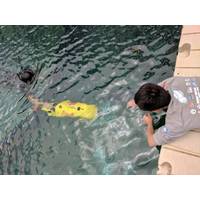
RoboSub Competition: 20 Years of Fun and Learning
into a bin-to complex actions like firing mock torpedoes through small cutout holes, identifying sound from an acoustic pinger, grabbing and moving an object, surfacing the AUV, and knocking balls outside of an octagon. Cornell University took this year's top prize of $4,500. Far Eastern Federal University from Russia won second prize and $4,000, and National University of Singapore placed third for $3,000. Earning fourth place and $2,000 was Harbin Engineering University from China. Georgia Institute of Technology rounded out the top five, taking home $1,000. Smaller awards of
Russia Launches a Laser-Powered Ship Repair Facility
parts of ships and vessels has been launched in Russia's Primorsky Territory, reports Sputnik. The technology of laser reordering of metallic parts in Russia's Primorye Territory was developed by the Far Eastern branch of the Russian Academy of Sciences (RAS) jointly with the Far Eastern Federal University and the Vladivostok-based ship-repairing center Dalzavod. Robot complexes will be equipped with high-power lasers which will allow overlaying repair coats of different metals on faulty parts automatically, fully restoring the operational integrity of separate units, the RAS Far Eastern
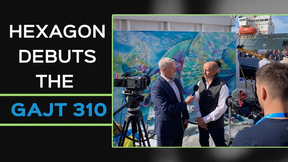
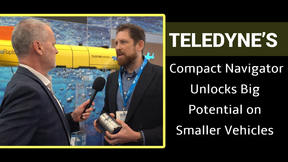
 February 2025
February 2025





